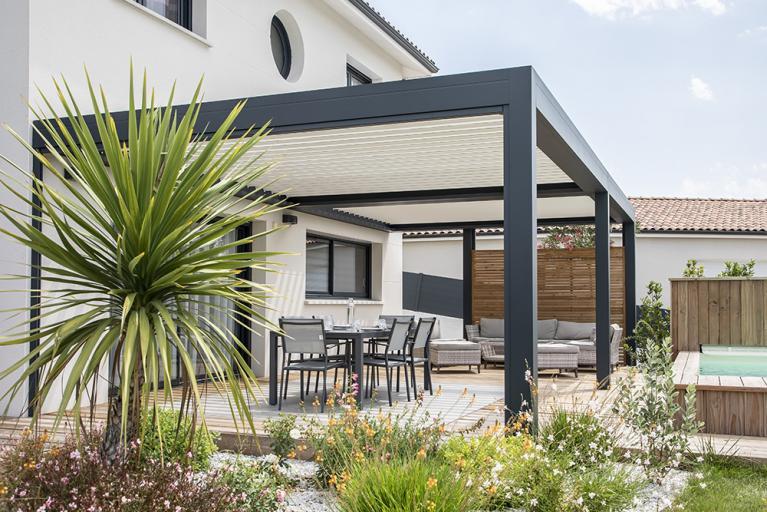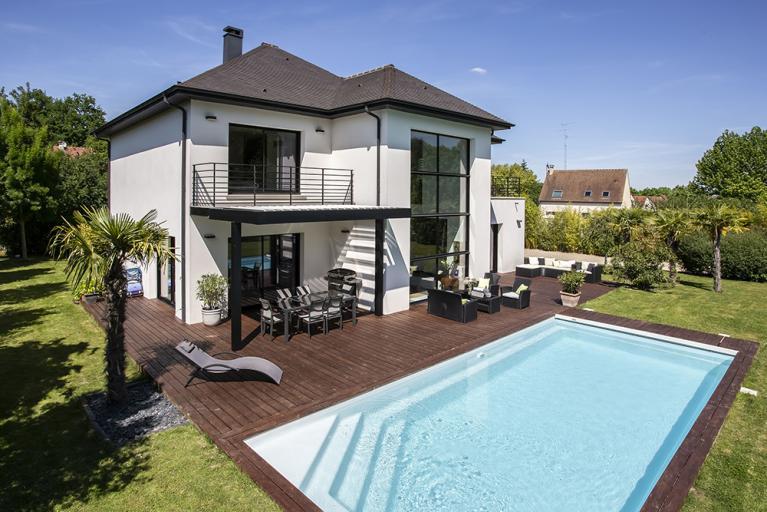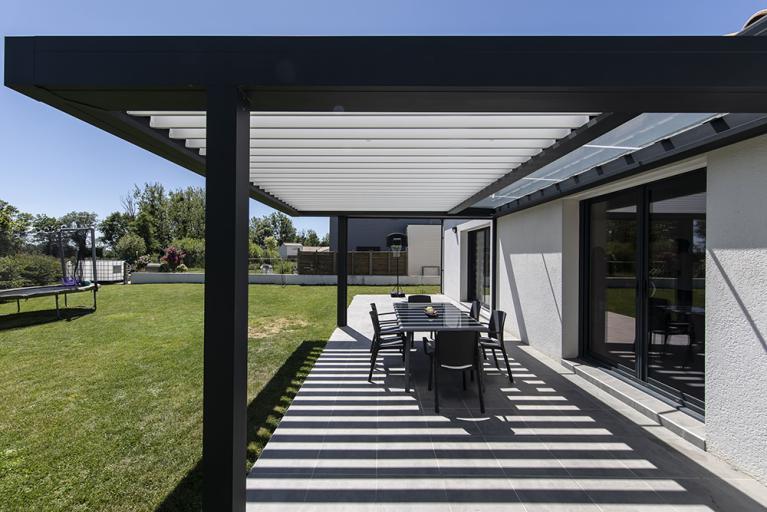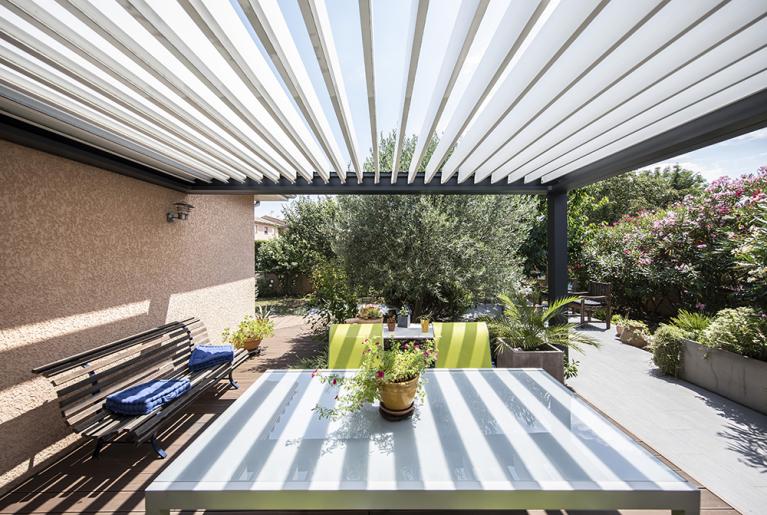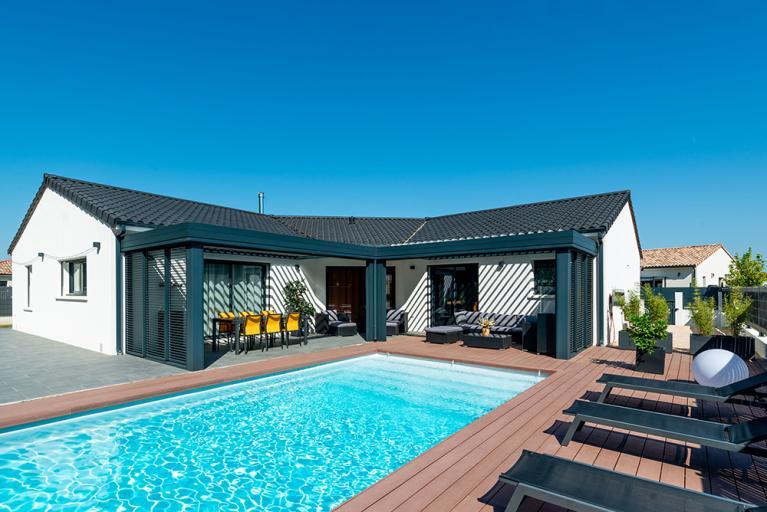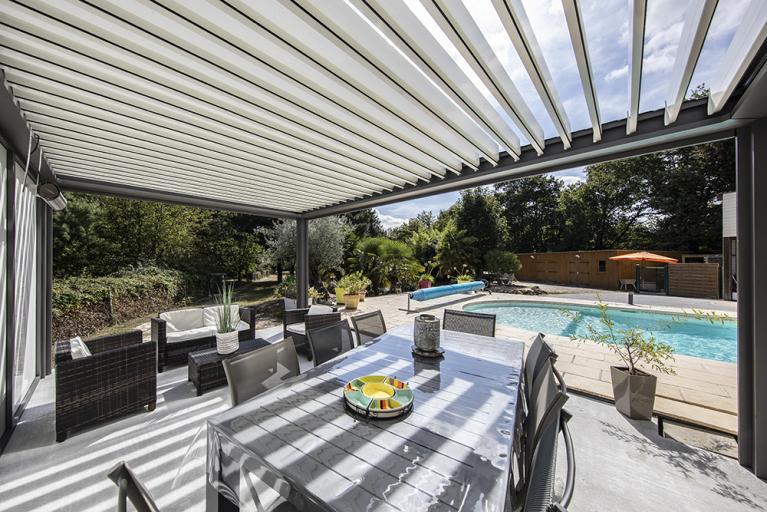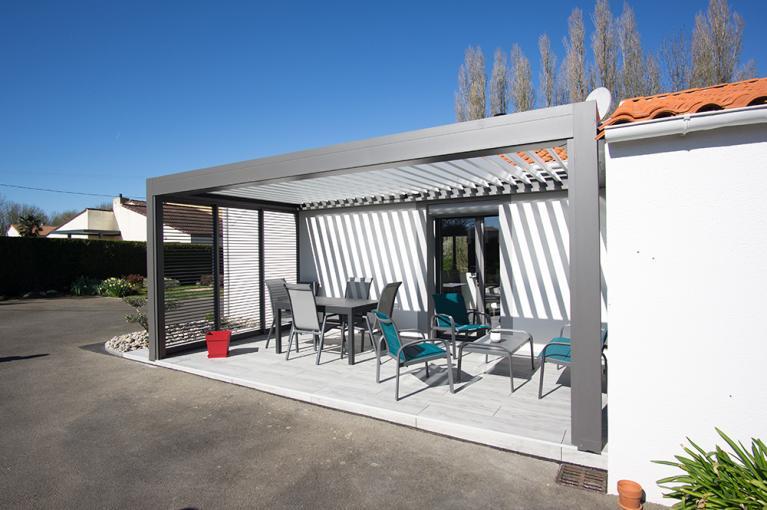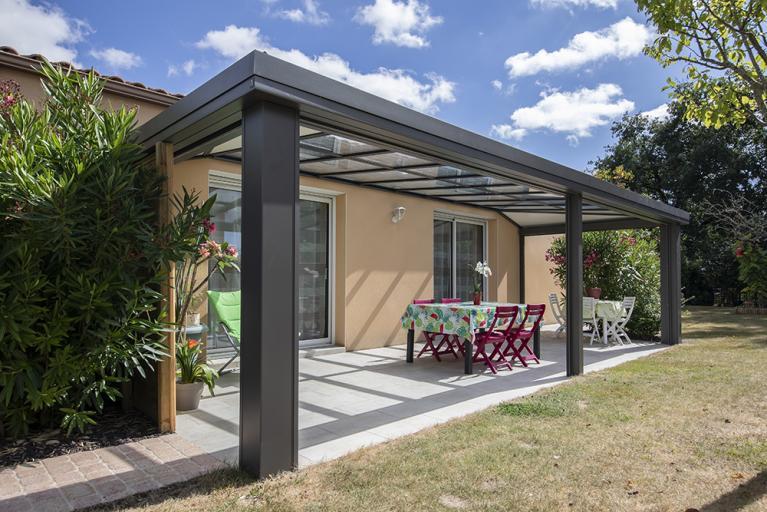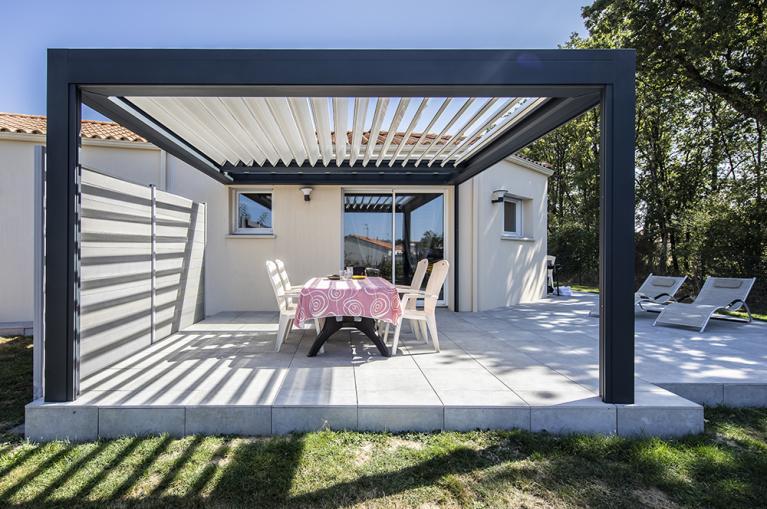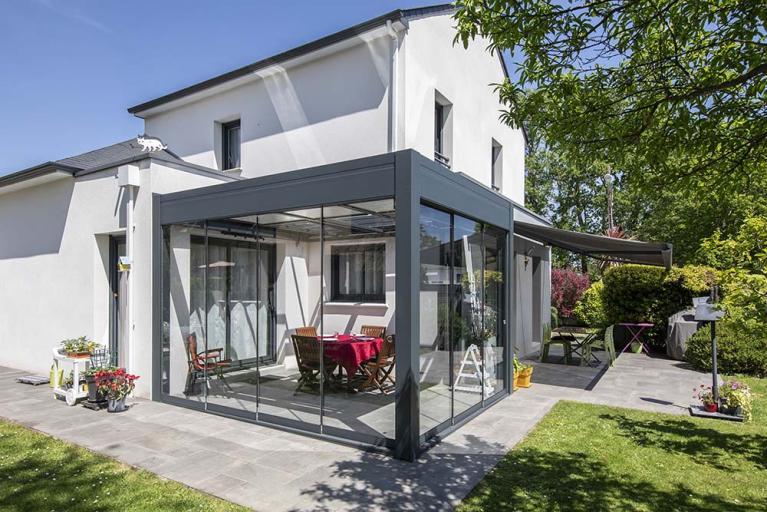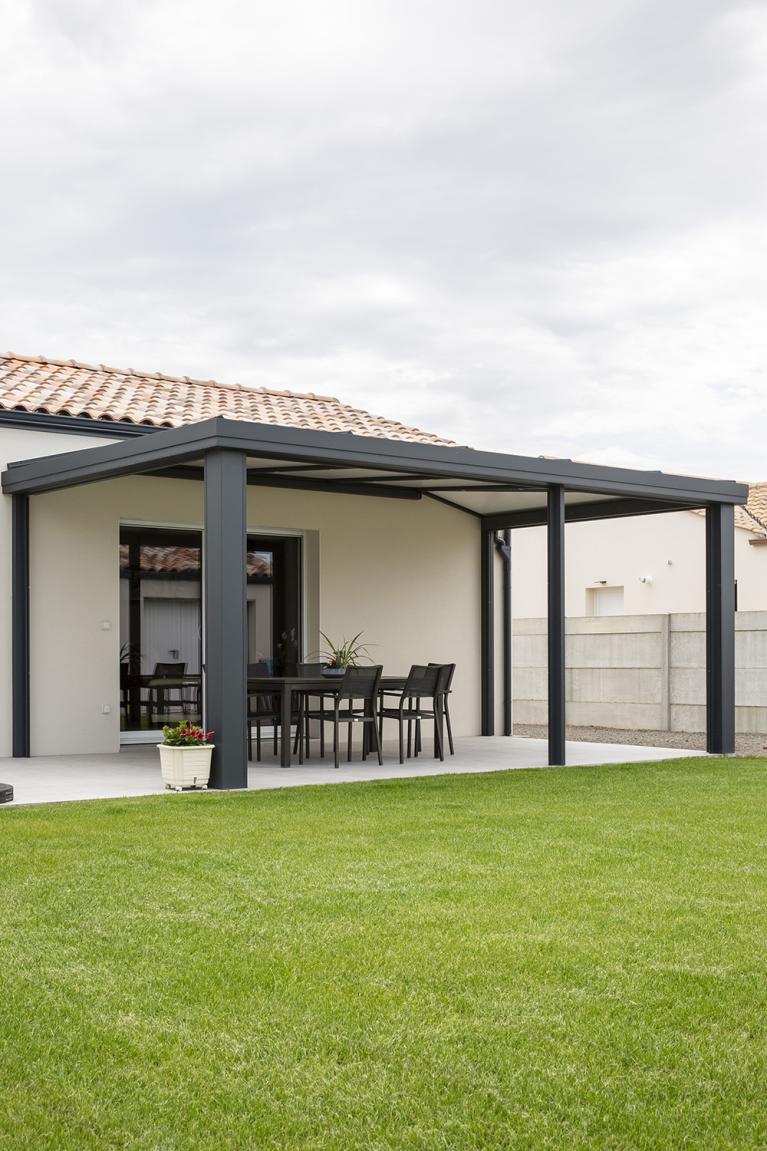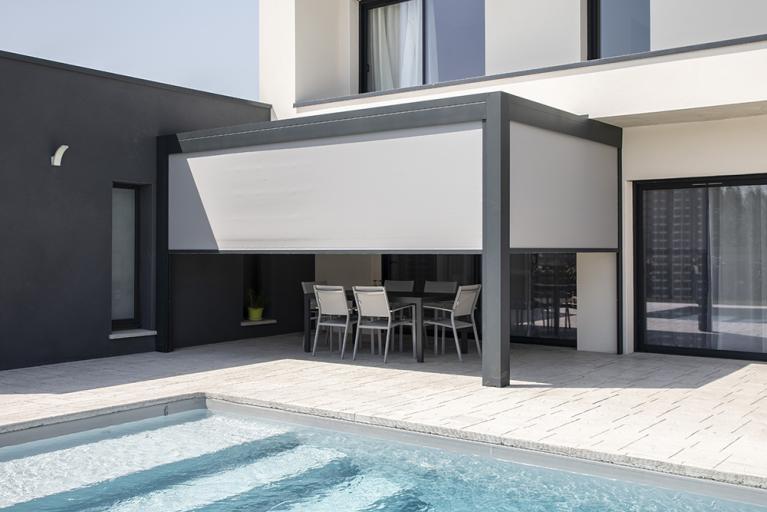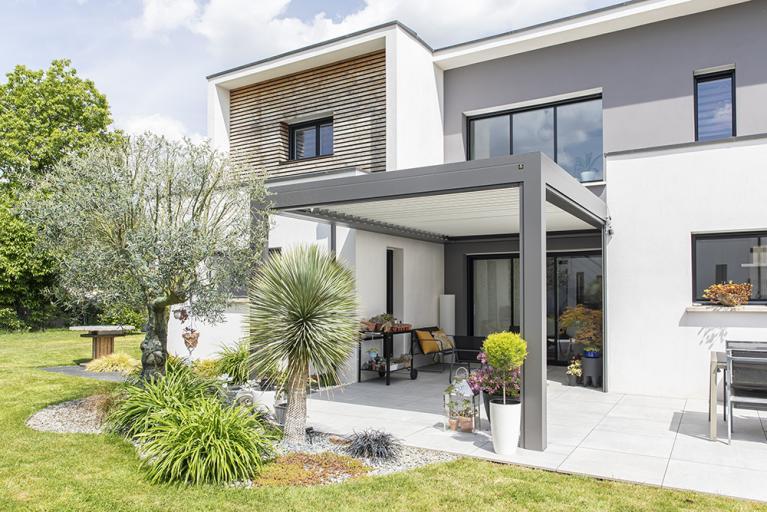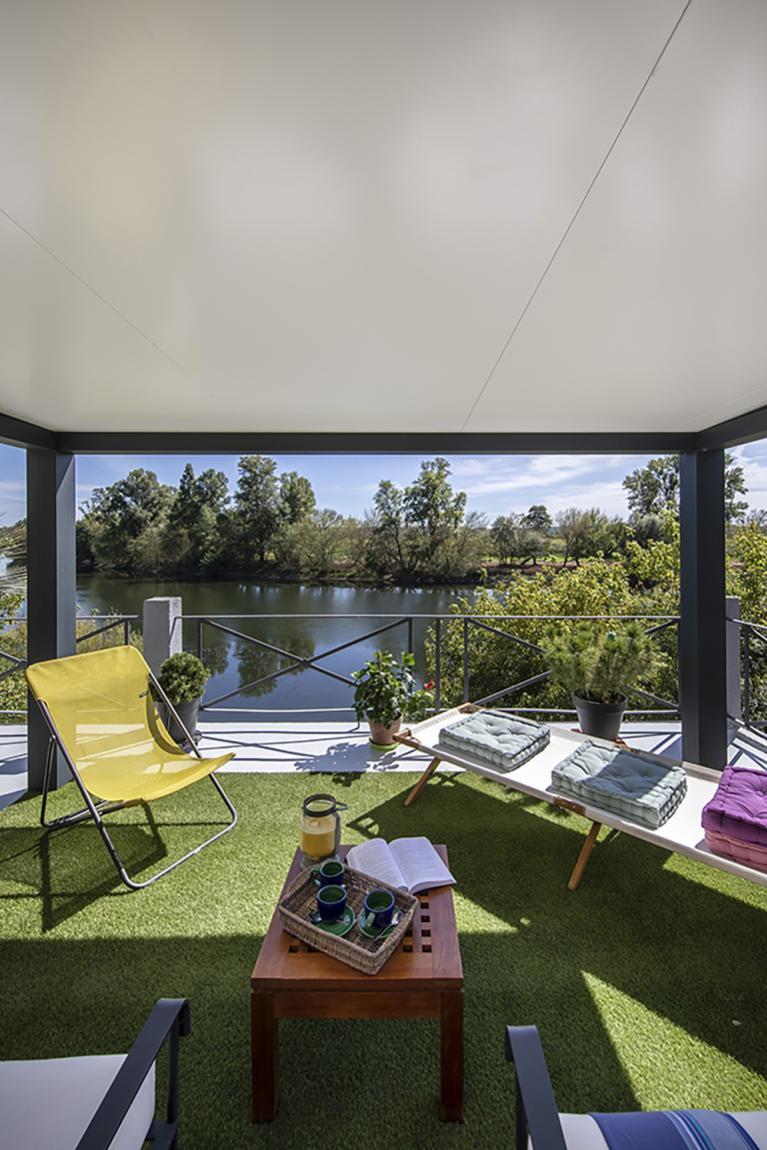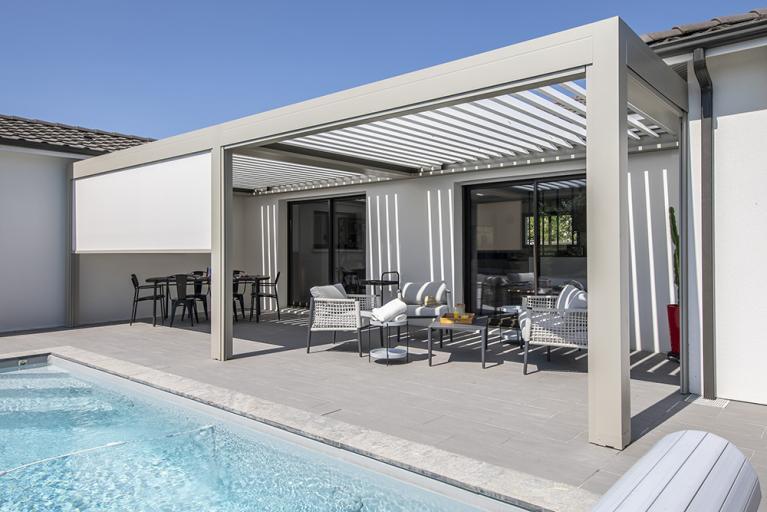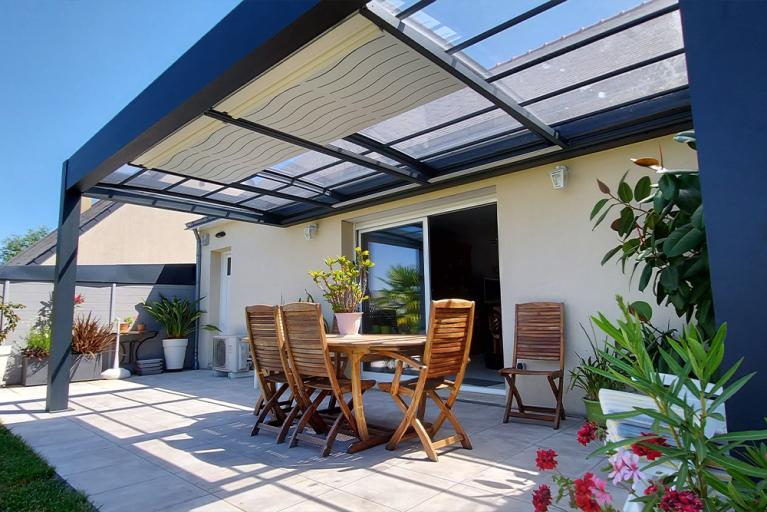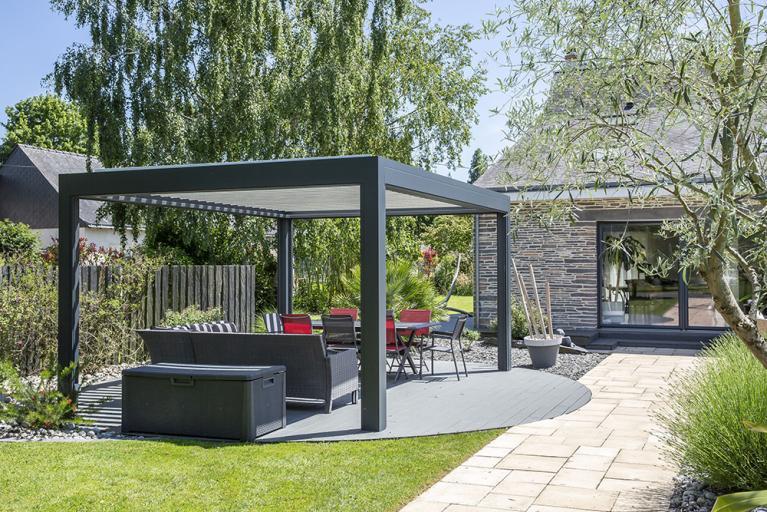What slope for a pergola?
A pergola is one of the best solutions if you want to enjoy your outdoors all year round. It's decorative and comes in every conceivable design, from the most rustic to the most contemporary. If you're reading this article, you've already got a good idea of the style of pergola you want to install. Now let's talk about the slope of a pergola. Among other things, it allows water to drain off properly. But what is the most suitable slope?
What criteria determine the slope of a pergola?
A slope prevents rainwater from stagnating and improves protection from the sun. As well as the aesthetic details, there are a number of criteria to consider when choosing the slope for your pergola.
Firstly, the slope will not be the same whether your pergola is lean-to or freestanding. The same applies if you have chosen to install a bioclimatic pergola with adjustable slats.
You also need to take into account the materials used in the construction of your pergola and the climate of the region in which it will be installed. Once you know all these factors, here are a few pointers to help you make your choice of slope:
- It's easier to find leaning pergolas than freestanding ones. This is because a freestanding pergola has four legs. To create a slope, the posts will have to be different sizes (parallel), which could destabilise the pergola;
- whether the pergola is bioclimatic or traditional, we recommend a minimum roof slope of 5% to drain off water efficiently;
- if you choose a steeper pergola slope, the water will run off more quickly and the height will be reduced where the ceiling is at its lowest;
- as far as the materials used are concerned, stagnant water will tend to age the wood prematurely. So choose a sloping pergola for this type of material. If you opt for an aluminium pergola, other options are available if you prefer a pergola with a horizontal roof.
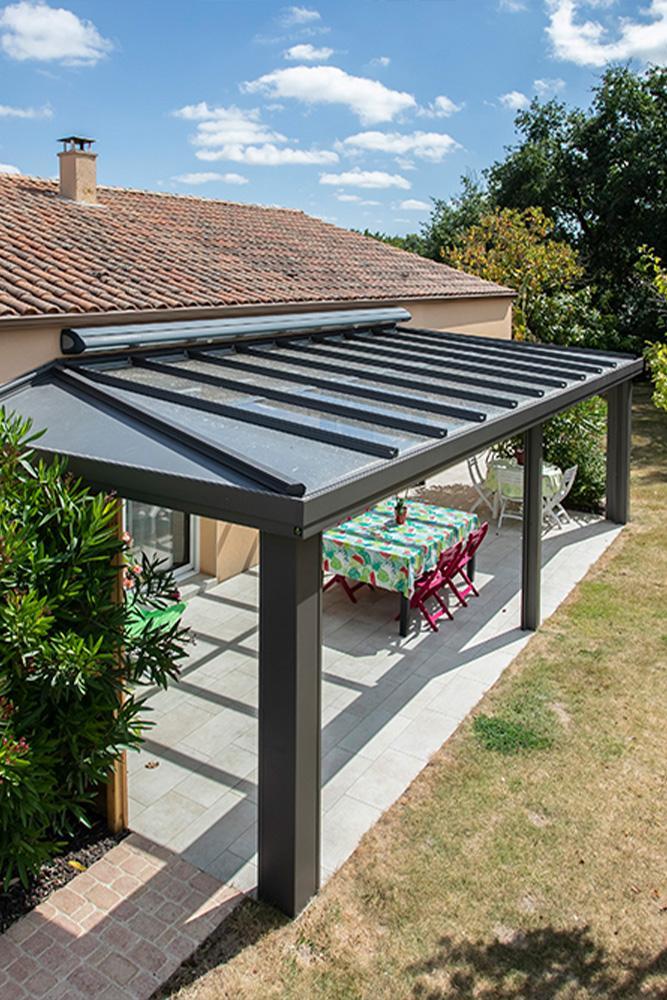
Sloping or horizontal pergola: the differences
As we've seen, the slope of a pergola roof ensures that rainwater runs off properly. It also gives your new shelter a different look. However, there are also pergolas with a horizontal roof. Let's take a look at the differences between a sloping pergola and a horizontal pergola.
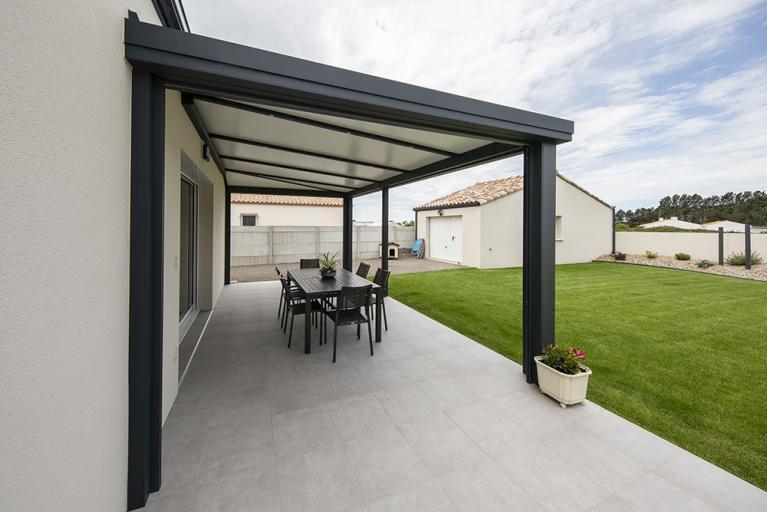
Sloping pergolas
The slope of the roof, generally 5%, prevents water from stagnating and forming puddles on the roof. Puddles that will damage your pergola more quickly. What's more, the slope of the pergola roof provides protection from the sun's rays for longer periods of the day. So when the rays start to fall, your pergola will continue to protect you. And let's not forget the elegance of the sloping pergola. Leaning against the house, it harmoniously decorates the outdoor space thanks to its harmonious lines. However, the design needs to be carefully thought through beforehand to ensure it blends in perfectly with the house. Good to know: you may want to add photovoltaic panels. One option is to build a photovoltaic pergola. For optimum electricity production, the solar panels should have a slope of 30 to 35°, or a roof pitch of at least 15 to 20%.
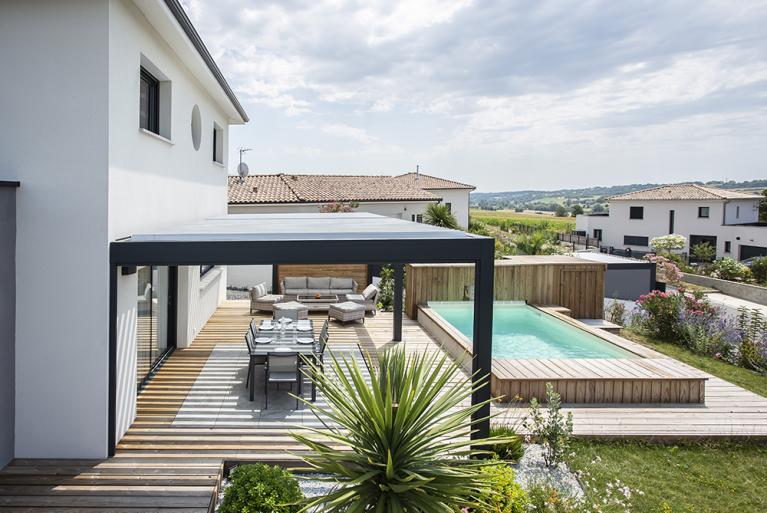
Horizontal pergolas
Horizontal pergolas are the best known because they are easier to build yourself. They have a 90° angled roof, perfectly perpendicular to the posts. This gives them a contemporary design. What's more, if you feel like closing your pergola in the future, you can do so by adding bay windows. As the roof is horizontal, there is no slope to allow rainwater to drain away. But don't panic! The builders have thought of everything! Perimeter gutters allow water to be collected. The water is then drained off at the base of the posts. And because modern pergolas are made from aluminium, there's no risk of mould or damage from rainwater.
Do you have a project in mind? Contact us now for a free study.
Discover our achievements
Find all the articles in the magazine
You have a project?
Would you like a personalised 3D study and a free quotation? Contact us by clicking below.
AKENA is...
Over 40 years of experience
Founded in 1981 by one man, we now have more than 500 employees dedicated to making your project a success.
Made in France
A historic site and two factories covering more than 25,000 m² in Dompierre-sur-Yon in the Vendée region (85)
Innovative and tailor-made products
At AKENA, we are brimming with new ideas to improve and enhance our products.
The European leader in conservatories, pergolas...
But not only! AKENA also offers a complete range of carports and pool houses.
